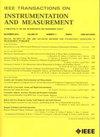基于传播函数频谱的地下电力电缆故障检测与定位
IF 5.6
2区 工程技术
Q1 ENGINEERING, ELECTRICAL & ELECTRONIC
IEEE Transactions on Instrumentation and Measurement
Pub Date : 2024-09-03
DOI:10.1109/TIM.2024.3453315
引用次数: 0
摘要
由于时域反射测量法(TDR)的检测灵敏度低,以及时域和频域反射测量法的跨期干扰问题,电缆中的多种潜在缺陷无法被检测和定位。本文提出了一种基于传播函数频谱的地下电力电缆故障检测新方法。首先,分析各种频率信号在电缆中的传播特性,找出缺陷导致传播函数(SPF)频谱局部不规则的原因。此外,还利用积分变换算法成功确定了缺陷的位置。由于宽带阻抗光谱仪 (BIS) 无法精确测量 163 米电缆的输入阻抗以进行缺陷检测,因此传播函数频谱更适用于长距离电缆。最后,对长度分别为 50 米、66 米和 163 米的电缆进行了机械损伤和热老化缺陷检测。故障定位误差在 0.21% 以内,为地下电缆故障检测提供了技术参考。本文章由计算机程序翻译,如有差异,请以英文原文为准。
Underground Power Cable Fault Detection and Localization Based on the Spectrum of Propagation Functions
Multiple potential defects in cables cannot be detected and localized due to the low detection sensitivity of the time-domain reflectometry (TDR) method, as well as the cross-term interference problem of the time- and frequency-domain reflectometry method. A new method for fault detection in underground power cables is proposed based on the spectrum of propagation function. First, the propagation characteristics of various frequency signals in cables are analyzed to identify the causes of local irregularities in the spectrum of the propagation function (SPF) resulting from defects. Furthermore, the locations of defects are successfully identified using the integral transform algorithm. As broadband impedance spectroscopy (BIS) cannot accurately measure the input impedance of a 163 m cable for defect detection, the spectrum of propagation function is more suitable for long-distance cables. Finally, cables of 50, 66, and 163 m lengths are examined for mechanical damage and thermal aging defects. The fault localization error is within 0.21%, providing a technical reference for fault detection of underground cables.
求助全文
通过发布文献求助,成功后即可免费获取论文全文。
去求助
来源期刊

IEEE Transactions on Instrumentation and Measurement
工程技术-工程:电子与电气
CiteScore
9.00
自引率
23.20%
发文量
1294
审稿时长
3.9 months
期刊介绍:
Papers are sought that address innovative solutions to the development and use of electrical and electronic instruments and equipment to measure, monitor and/or record physical phenomena for the purpose of advancing measurement science, methods, functionality and applications. The scope of these papers may encompass: (1) theory, methodology, and practice of measurement; (2) design, development and evaluation of instrumentation and measurement systems and components used in generating, acquiring, conditioning and processing signals; (3) analysis, representation, display, and preservation of the information obtained from a set of measurements; and (4) scientific and technical support to establishment and maintenance of technical standards in the field of Instrumentation and Measurement.
 求助内容:
求助内容: 应助结果提醒方式:
应助结果提醒方式:


